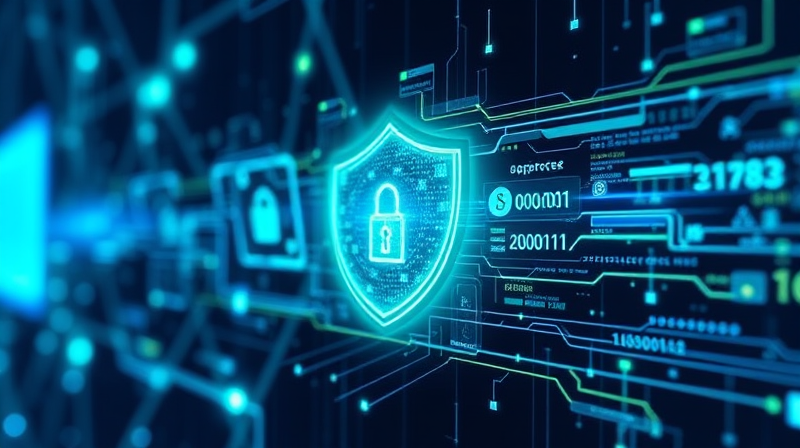In today’s fast-evolving cyber landscape, protecting sensitive data has become a paramount concern for organizations and individuals alike. As information continues to be an invaluable resource, it is crucial to adopt strong security practices that not only defend against cyber threats but also build trust and resilience in a digitally connected world.
The digital era demands a proactive approach to safeguard information, where every layer of defense contributes to an overarching security strategy. With cyber threats becoming more sophisticated by the day, integrating multiple security measures can create a robust defense against potential breaches. In this article, we explore several essential actions that can significantly enhance data security in the modern digital landscape.
Implementing the Foundation: Strong Encryption
Encryption is one of the most effective ways to protect sensitive information. Organizations should encrypt data at rest and in transit to ensure that unauthorized entities cannot easily access vital information. Using advanced encryption protocols such as SSL/TLS for securing web communications helps in minimizing the risks associated with data breaches.
By adopting advanced encryption methods, businesses can secure their data as it moves across networks, making it extremely challenging for cybercriminals to intercept or misuse information. The critical nature of encryption forms the backbone of a well-rounded cybersecurity strategy.
Privacy by Design: Embedding Security from the Start
Integrating privacy features into the architecture of products, services, and processes offers the advantage of early risk mitigation. The privacy by design approach not only complies with regulations but also builds a culture of trust among users and stakeholders. Addressing privacy concerns at the onset helps in reducing the risk of inappropriate disclosure or misuse of personal data, particularly in environments dominated by AI-powered systems.
This concept emphasizes the importance of planning and incorporating privacy controls well before the onset of potential security issues, thereby ensuring a strong foundation for data protection.
Enhancing Access Controls
Access control is another critical component of an effective cybersecurity strategy. By limiting who can view or use data, organizations markedly reduce the likelihood of unintentional data exposure or intentional breaches. This technique involves:
- Applying the principle of least privilege: Grant users only the access necessary for their specific roles.
- Utilizing multi-factor authentication: Strengthen password security by introducing additional verification methods.
- Implementing role-based access control: Manage permissions effectively by categorizing user roles and responsibilities.
- Regularly reviewing access rights: Ensure that permissions are neither excessive nor outdated, particularly when roles shift within an organization.
These measures not only enhance security but also foster a culture of accountability and diligence among employees.
Regular Security Audits and Employee Training
Conducting regular security audits is fundamental. These audits help in identifying vulnerabilities, verifying if security protocols are effective, and ensuring compliance with relevant data protection regulations. A detailed and periodic review of systems tests the integrity of the cybersecurity defenses.
Alongside technical audits, continuous employee training is vital. Humans often represent the weakest link in security. Regular training sessions can educate staff on:
- Identifying phishing and social engineering attacks.
- Implementing strong password practices.
- Recognizing and following proper data handling procedures.
Consistent training not only mitigates human error but also empowers teams to actively contribute to the organization’s defense strategy.
Incident Response and the Role of AI
A well-defined incident response plan is indispensable when dealing with potential data breaches. Such plans should include strategies for:
- Quick detection and containment of the breach.
- Assessing the impact and identifying the breach scope.
- Notifying relevant parties and complying with legal requirements.
- Initiating recovery procedures and reviewing the incident to improve future defenses.
This structured approach can greatly reduce the repercussions of a security incident and reinforce an organization's overall preparedness.
Utilizing advanced technologies, including artificial intelligence and machine learning, further boosts security. AI-powered tools can process and analyze massive datasets to identify anomalies instantly, allowing organizations to address threats in real time. This proactive monitoring is critical for thwarting attacks before they evolve into full-blown breaches.
Embracing a Zero Trust Mindset and Continuous Updates
The concept of Zero Trust is gaining traction as organizations recognize that no user or device should be trusted by default. This model demands continual verification for every access request, significantly curtailing the risk of unauthorized intrusions. By not assuming inherent trust based on network location, businesses can reduce the complexities associated with internal data vulnerabilities.
Additionally, timely maintenance such as regular updates and patch management is vital. Cybercriminals often exploit outdated software with known vulnerabilities, so ensuring that systems are updated with the latest security patches minimizes the window of opportunity for attacks.
This holistic approach is further complemented by robust data classification and governance practices. Organizations should categorize data according to its sensitivity and implement corresponding protection measures. Clear governance policies ensure that every piece of information is handled consistently and securely across various channels.
Ultimately, these combined actions form a resilient framework that can adapt to new and emerging threats. When organizations integrate these multifaceted measures into their security strategy, they not only shield themselves from current cyber risks but also lay the groundwork for future innovations in data protection.
By embracing these critical strategies, organizations can stay ahead in the battle against cyber threats. The digital future is uncertain, but with a proactive, comprehensive approach, safeguarding sensitive data becomes an achievable goal, ensuring that valuable assets are protected in every corner of cyberspace.








